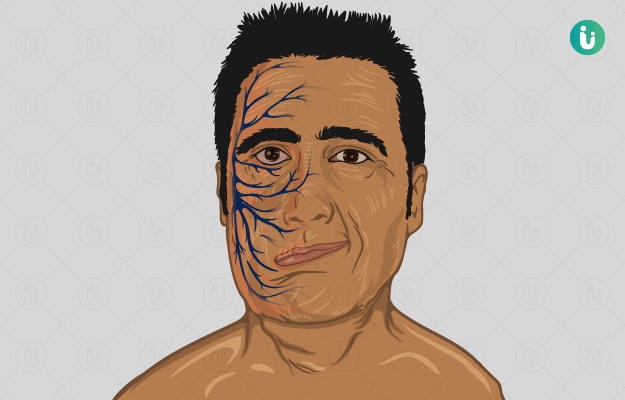What is Bell’s palsy?
Bell’s palsy is a condition in which the facial muscles become weak or paralysed on one side. This happens due to damage to the facial nerve supplying these muscles. However, these muscles are temporarily affected, and the condition usually resolves completely with treatment.
What are its main signs and symptoms?
- Bell’s palsy typically affects the muscles on one side of the face only. In about 1% of cases, the effect is bilateral.
- The movements controlled by the facial nerve are affected. Patients experience difficulty in blinking, opening the mouth on the affected side, smiling and chewing.
- There may be a pain on that side of the face, particularly in the jaw and head.
- The eyelids droop and saliva drools from the corner of the mouth, due to muscle weakness.
- Taste sensation on the front part of the tongue may also be affected.
What are the main causes of Bell's palsy?
- The exact cause of Bell’s palsy remains unknown; however, there are several viral infections which are said to trigger it. These include herpes simplex, herpes zoster, HIV, cytomegalovirus and Epstein Barr virus.
Risk factors for the disease include:
Any factor that can cause trauma, inflammation or damage to the facial nerve can contribute to Bell’s palsy.
How is it diagnosed and treated?
The diagnosis requires a physical evaluation, along with imaging and blood tests.
- The doctor will examine the face based on the symptoms, and check for signs like drooping of eyelids, drooling of saliva, etc.
- Imaging techniques like an MRI or CT scan help to see the condition of the facial nerve.
- If the physician suspects a viral infection, a blood test is done to confirm the same.
- Diagnosis also relies on excluding other conditions like stroke, Lyme disease and brain tumour.
The treatment for Bell’s palsy is highly dependent on the identified causes or risk factors.
- Corticosteroids are the standard drugs used for treating this condition. They are known to provide relief over a period of 6 months. However, it is important to start treatment with steroids early in the condition.
- If a virus is suspected to be the cause, antiviral drugs are given.
- Along with medicines, muscle exercises through physiotherapy are also advised.
- In severe cases, where the nerve is compressed or affected by trauma, a surgical procedure may have to be performed to relieve compression.
- The condition is known to resolve in a few months and rarely recurs.

 Doctors for Bell's Palsy
Doctors for Bell's Palsy  OTC Medicines for Bell's Palsy
OTC Medicines for Bell's Palsy



















